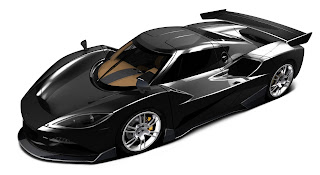The 86th Geneva International Motor Show gets underway in early March, and it's a key time of year for manufacturers to introduce models with the European buyer in mind. Alongside the exotica, of course there are a large number of concepts and launches which help deliver a more sustainable driving experience. Here are the sustainable highlights...
Arash AF10
If you were playing 'Top Trumps', you'd do worse than to have a card for the Arash AF10.
 |
| Arash AF10 |
- 0-60mph - 2.8 seconds
- 2080 bhp
- 200mph+ top speed
- 1 petrol engine
- 4 electric motors
- 5 gearboxes
BMW 740e iPerformance
The BMW 740e iPerformance is a plug-in hybrid, which is the first to use the important iPerformance subbrand. This demonstrates where technologies from the 'i' sub-brand (i3/i8) are being mainstreamed into the main BMW lineup.
DS E-TENSE
The PSA Group recently re-launched its DS brand as a premium offering. And for Geneva, they're introducing a all-electric concept vehicle, the DS E-TENSE. The electric motor produces 396bhp, from a 53kWh battery.
 |
| DS E-Tense Concept |
Hyundai IONIQ
Like most car manufacturers, Hyundai has probably looked at the success story of the Toyota Prius with initial scepticism and pity, quickly turning into envy! Well, Hyundai hopes it has got a 'Prius killer' on its hands, with the new IONIQ.
The IONIQ lineup includes the three main powertrains which have the potential to become mainstream in the next few years - pure electric, plug-in hybrid, and hybrid - the world's first model to do so. [Remember, they already brought the ix35 fuel-cell SUV to market, so have hydrogen covered too].
The hybrids have a 1.6 litre petrol engine, then depending on the model, different specifications for the electric motor output and battery capacity are used. It will be really interesting to see how the different models sell in different markets - an experiment even Toyota will watch with interest.
Kia will be revealing their Optima Plug-in hybrid at Geneva, with a 33 mile pure electric range, provided by a 9.8 kWh lithium-polymer battery pack paired with a 50 kW electric motor. There's also a 2.0 litre diesel engine.
 |
| Kia Optima Plug-in Hybrid |
Lexus will launch a hybrid version of the LC500, using a 3.5L V6 petrol engine, coupled with an electric motor.
 |
| Lexus LC500h |
 |
| Lexus LC500h |
The Morgan Motor Company is one of the few surviving British car manufacturers, with an illustrious history dating back to 1909. With a strong heritage of coach-building, the family-run company is keeping apace with its multinational manufacturer competitors, by introducing a new concept at Geneva, the EV3. A 62bhp electric motor and lithium battery gives a range of 150 miles, a top speed of 115mph and 0-62mph in 8.0 seconds.
 |
| Morgan EV3 |
Nissan
Nissan have partnered with renowned architects Foster & Partners to outline a vision of the future fuel station - and my personal view is that is spot-on (except maybe the driving the car into work, literally!) They have created a video which helps bring the concept to life:
SsangYong SIV-2 Concept
SsangYong are due to release a mild-hybrid concept, the SIV-2 [SIV = Smart Interface Vehicle]. A 1.5 litre petrol engine will be paired with a 10kW electric motor, supported by a 0.5Kwh battery.
Toyota C-HR
Toyota have revealed a production version of the C-HR, prototypes which have been seen in previous motor shows. There is a full hybrid option and it's based around the Prius architecture, but arguably its looks will appeal to a different customer segment. It is reported to have emissions less than 90g/km.
 |
| Toyota C-HR |
--------
All images © respective manufacturers



























